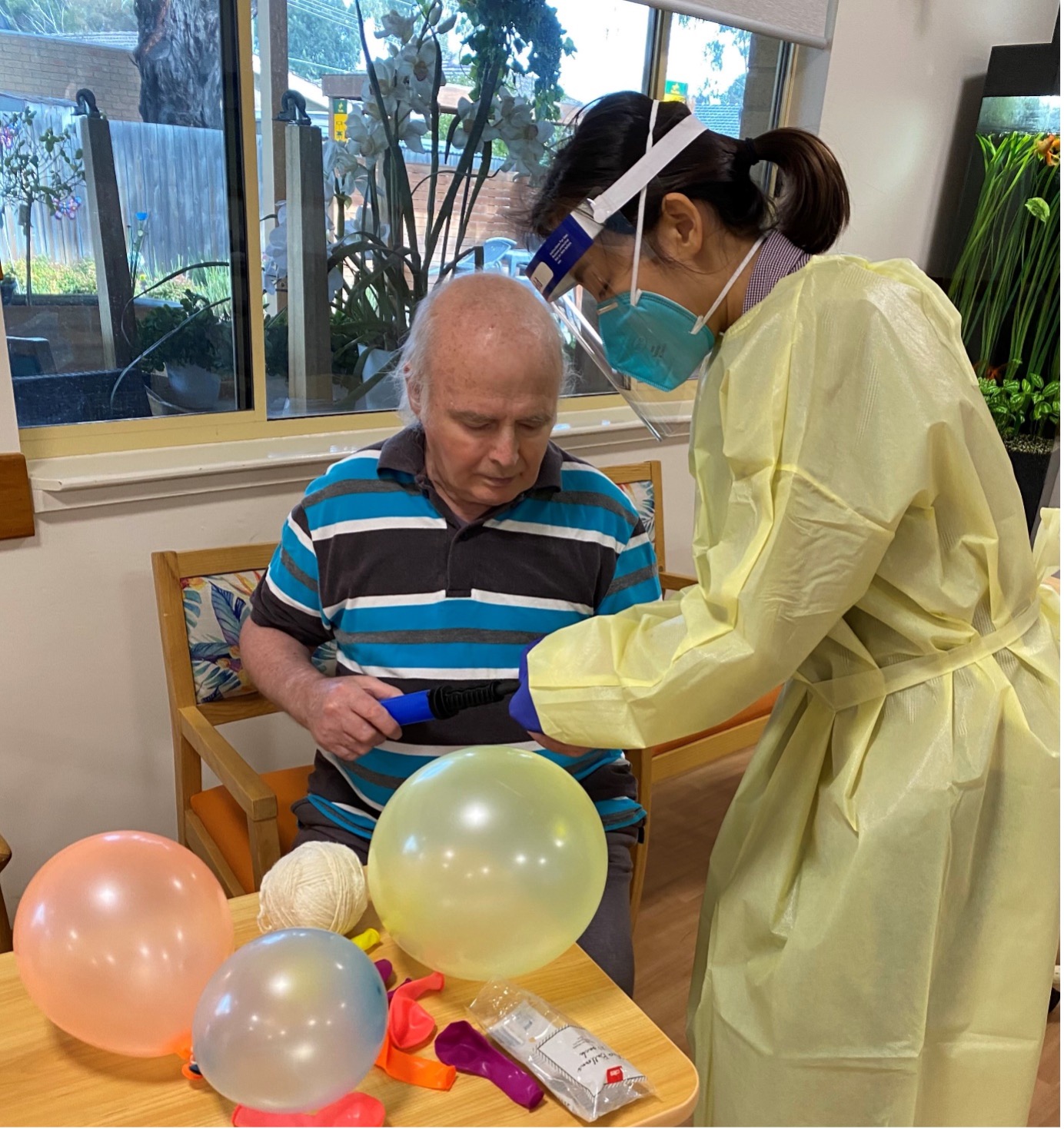Aged care nurses during the COVID-19 pandemic: Protecting older people, Australia

Contributors: Jed Montayre, RN, PhD and Donna Wang, RN, PhD (candidate)
To mark Elder Abuse Awareness Day, on 15 June, ICN brings you a story from Australia showing the immense contribution of aged care nurses to keeping older people safe during this time of COVID-19 pandemic.
The role of aged care nurses during the COVID-19 pandemic was taken to extraordinary heights, encompassing the balance of clinical work, psychosocial care and ensuring that all older people under their care are protected from the virus.
Prior to the pandemic, aged care nurses’ roles were crucial in preventing the spread of any infection in their facilities, such as gastrointestinal infections. Aged care nurses have always been prepared to address this kind of outbreak. However, the pandemic has emphasised refinement of clinical skills and the holistic approach of aged care nurses as part of their everyday practice in aged care settings.
Respecting residents’ homes
Residential aged care home (RACH) facilities are residents’ ‘homes’, as they live there, but they are homes with round the clock access to visitors - not just family, but also staff (nurses, care assistants, administrative staff, cleaners, kitchen personnel etc.), who technically are visitors to the facility. While staff come and go in hospital settings, the main difference is that hospitals are not considered the ‘resident’s home’, which means a dedicated COVID-19 ward operates differently to that of aged care facilities. As a very simple comparison, a hospital can implement strict measures such as a scheduled time for coffee or tea service, while in aged care facilities, residents can have a cup of coffee or tea anytime they please, as it is their home. With the recent implementation of person-centred models of care in aged care facilities, the level of physical and social interactions and the day-to-day operations in RACHs are described to be ‘home-like’; residents’ rights are highly valued rather than solely following some institutional protocol. This is challenging during a COVID-19 outbreak, which adds an extra layer of complexity in an attempt to strictly implement and adhere to recommended infection control guidelines. Aged care nurses have managed to balance the implementation of infection control protocol while upholding residents’ rights in their own homes.
Transmission Precautions
Contact with people (staff, families and friends) who have been exposed externally predisposes the high risk of a rapid transmission in aged care facilities. In the earlier months of 2020, the Visiting Code for aged care facilities in Australia was released, which offered standardised and fair conditions to visiting protocol in RACHs. The code has ensured that residents’ and families’ rights are upheld and particularly recognises the impact on residents’ wellbeing and the social, holistic implications (such as end-of-life care scenarios) from physical distancing measures. However, defining who the ‘visitor’ is and identifying the ‘infectious’ visitor in RACHs can be problematic as, pre-COVID-19, staff members within the RACHs normally worked for more than one facility. These are the considerations and important issues that nurses have to face during the pandemic, which has led to changing work arrangements and nurses taking an active role to ensure that older people are safe and staff activities are recorded before reporting to work, for contact tracing purposes.
Ensuring that treatment and care continue
During the pandemic, everyone is at risk and susceptible, residents and staff alike. Aged care nurses oversee resident and staff wellbeing. Some residents might require continuous treatment, such as routine blood checks, because they are currently taking anti-coagulants, or frequent observations, for enteral tubes, for example. Extra measures are required for these types of treatments and activities, along with considerations for social distancing and infection control. There are also residents with dementia who find comfort in walking in the corridors at any given time. Aged care nurses ensure that necessary treatment and care continue for their residents, while adhering to the pandemic infection protocol implemented in the facilities.
Recognising these realities in aged care during the pandemic is as important as updating new infection control guidelines or providing PPE for aged care facilities. Aged care nurses in Australia continue to contribute to keeping older people safe during the time of pandemic.
